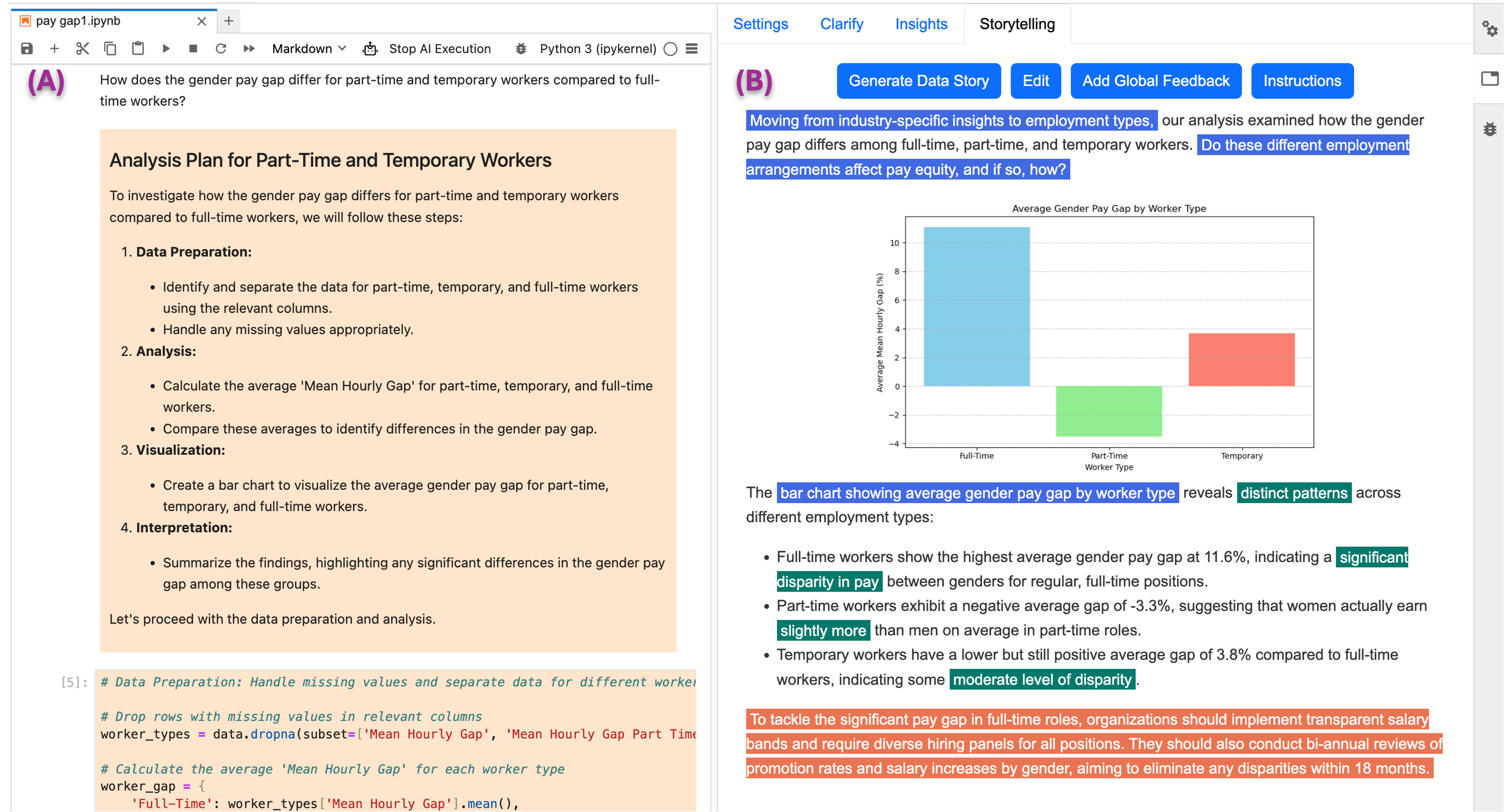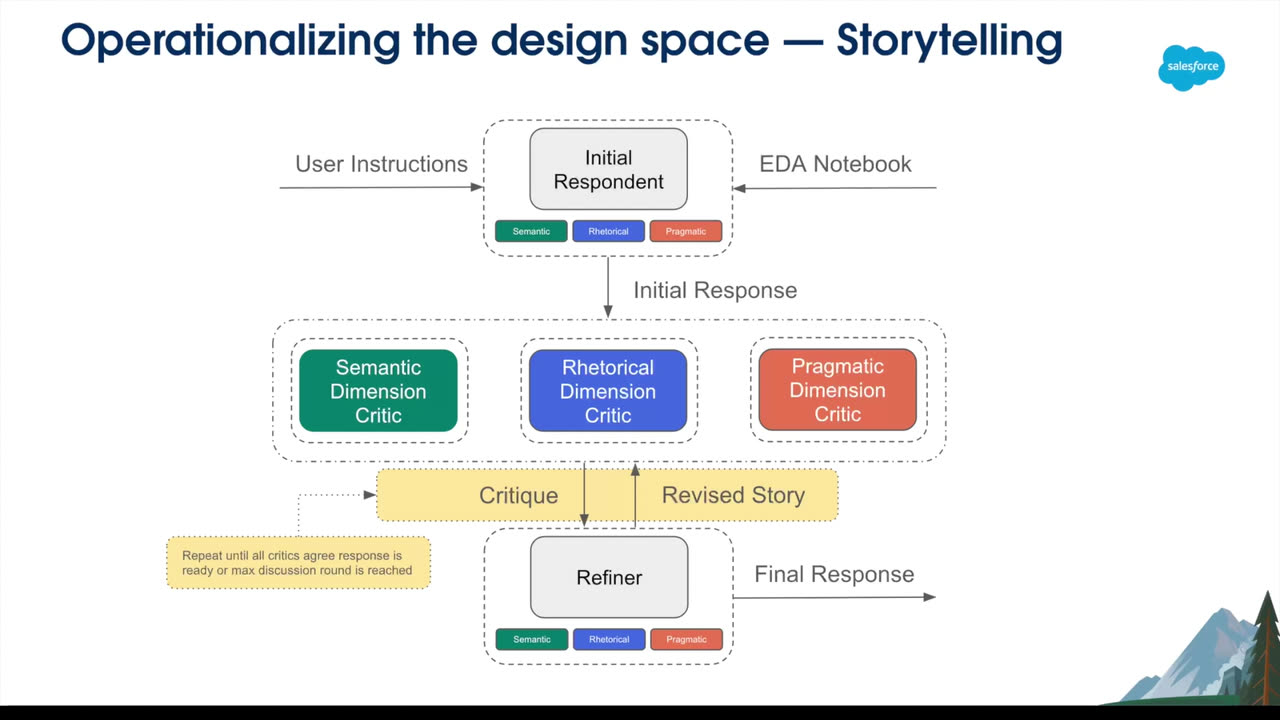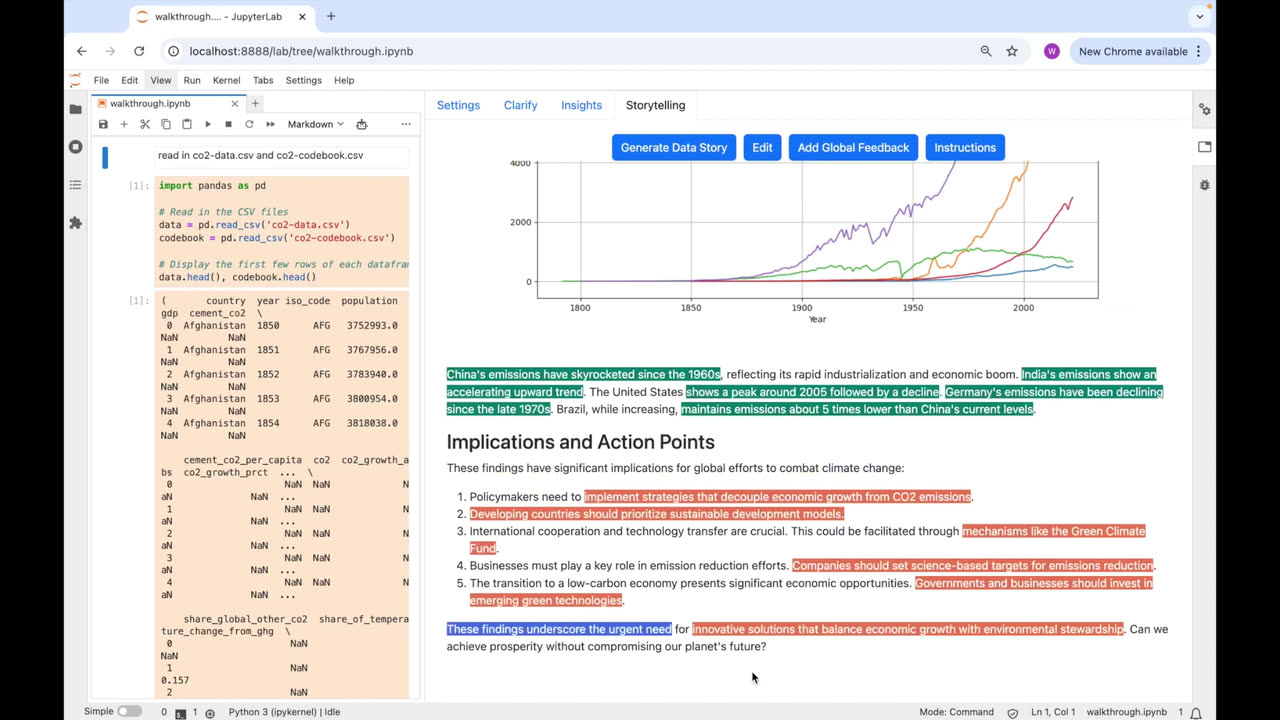
Tableau Research | Unlocking Actionable Insights: Multi-Agent AI Assistants for Data Analysis and Storytelling
In today’s data-driven world, uncovering insights is no longer enough—what truly matters is transforming those insights into actionable outcomes.
Whether you’re analyzing customer behavior, optimizing production processes, or evaluating public policy impact, it’s essential to go beyond simple charts and statistics to communicate valuable insights clearly and effectively.
The multi-agent AI assistant — Jupybara — was built precisely for this purpose.
This tool was officially introduced by the Tableau Research team at ACM CHI 2025, a premier international conference on human-computer interaction.
The team includes Will (Huichen) Wang, a Ph.D. student at the University of Washington and Tableau intern, Tableau Research Director Vidya Setlur, and Northwestern University Professor Larry Birnbaum.
Let’s explore the motivation and process behind this research, and how Jupybara helps analysts turn data into clear, persuasive, and actionable stories within the Jupyter Notebook environment.
From Data Exploration to Result Communication
As an AI agent–powered smart assistant, Jupybara supports the full data analysis workflow—from initial exploratory data analysis (EDA) to insight-driven storytelling. It’s implemented as a Jupyter Notebook extension, integrating large language models (LLMs) directly into the analyst’s working environment to enable human-AI collaboration.

As shown above, this is the Jupybara interface. Through its Jupyter Notebook extension format, it supports actionable EDA and data storytelling:
(A) On the left, when exploring complex data, Jupybara first generates and displays an analysis plan before outputting code.
(B) On the right, in the generated data story, Jupybara articulates the analysis results with precise language, including an introduction, transitions, and strategy explanations. It helps users gain deeper insights and uses domain knowledge to translate data findings into action plans.
Additionally, based on a three-dimensional design framework, Jupybara integrates data visualization theory, narrative logic, and communication principles. These dimensions guide how Jupybara generates, optimizes, and refines data stories—ultimately converting insights into real-world impact.
01 Semantic Precision
Ensures that data insights are communicated with both accuracy and factual grounding.
For example, when describing a steep decline in average hourly wages, Jupybara might suggest terms like “decline,” “decrease,” or “plummet,” each with a distinct semantic tone—showing how language can stay tightly aligned with statistical trends.
02 Rhetorical Framing
Enables persuasive, audience-targeted communication so insights resonate with intended recipients.
For instance, when analyzing gender pay gaps, Jupybara’s story assistant might begin with a headline-style statement: “Women in full-time roles earn 17% less than men,” followed by explanatory detail: “Even after adjusting for industry and education, the gap persists—indicating systemic bias rather than structural factors.”
03 Real-World Relevance
Connects insights directly to real decision-making contexts, combining industry background with practical action.
For example, upon detecting a significant gender pay gap in full-time roles, Jupybara might recommend: “Organizations should establish transparent pay systems and conduct biannual gender-based promotion audits.”
Multi-Agent Collaboration for Human-AI Co-analysis
Jupybara introduces a multi-agent architecture in which different LLM-based agents specialize in distinct tasks throughout the analysis and storytelling process: some interpret statistical results and visualizations, others check for clarity and persuasiveness, while others ensure alignment with specific industry contexts.

Illustration: Jupybara’s multi-agent collaboration process in data storytelling, showing how the three-dimensional design framework (semantic, rhetorical, practical) is applied in generating and refining analytical narratives.
This division of responsibilities is inspired by how human analysts collaborate as a team, enabling iterative refinement of both analysis and storytelling.
Of course, for simpler or time-sensitive tasks, Jupybara also supports a single-agent mode. However, the multi-agent approach opens new possibilities for future research—especially in complex scenarios that require layered reasoning, peer review, or flexible narrative adjustments.
Insights from Cross-Industry Practice
To evaluate how analysts interact with AI-assisted tools in exploratory data analysis (EDA) and storytelling, the research team invited nine experienced analysts from finance, healthcare, retail, and other industries to test Jupybara.
Participants used both the single-agent and multi-agent versions to complete an EDA task and generate a data story using a dataset relevant to their domain expertise.
Analysts generally found Jupybara’s “insight tracker” helpful in reducing the mental load of remembering and organizing the analysis process, keeping thought processes and history more transparent. The “clarification tab” enabled targeted dialogue with the AI to better understand the analysis results it provided.
Additionally, Jupybara proved valuable for refining how analytical conclusions are expressed. Semantic and rhetorical suggestions helped analysts choose better wording and build more persuasive narrative structures.
Jupybara’s suggestions for analytical strategies were also highly practical—such as explaining the rationale behind handling missing values—supporting reflection and explanation of their methodological choices.

Illustration: Jupybara interface showing an automatically generated analysis report and actionable recommendations with highlights for key points and improvement areas.
Overall, participants consistently agreed that outputs from the multi-agent architecture outperformed single-agent results in terms of semantic precision, rhetorical effectiveness, and real-world relevance.
More Than an Analyst Tool — A Research Platform
Jupybara is not only a powerful tool for improving analyst productivity, but also a research platform for exploring human-AI collaboration. Tableau Research’s evaluations show that Jupybara excels in usability, controllability, explainability, and revisability—key factors in building effective human-AI collaborative systems.
As multi-agent AI tools become more prevalent, Jupybara is just the beginning. In the future, the Tableau Research team may explore agents specialized by domain (e.g., healthcare or finance) or narrative style—or systems that can autonomously adjust analytical strategies based on evolving data.









